-
Posts
2,941 -
Joined
-
Last visited
Content Type
Profiles
Forums
Gallery
Events
Posts posted by Hubac's Historian
-
-
Your point about the hierarchy of ornament is well-taken and correct. If there is a place for human forms, where they are otherwise absent, it would certainly be at the figurehead.
Frolich’s version of L’Ambiteaux carries a lion as it’s figurehead, while the builder below employs this human figure:
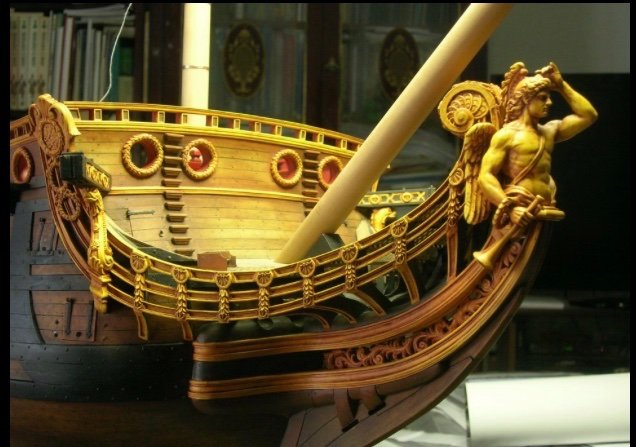
I’m not sure whom this figure from Greek mythology represents, exactly, but my guess would be Apollo, as that is the character most closely associated with Louis XIV. He is carrying a victory laurel and Fame’s trumpet proclaiming his dominance and superiority to all comers.
I do not think there is anything inherently wrong with an effigy of Zeus as your figurehead, even if you don’t employ and other human figures, elsewhere in the decor.
-
On 7/13/2021 at 5:43 PM, mtaylor said:
Well... I think the Arms of France are about done. Needs some tweeking on the left side still but for now, I'm putting it away to work on some planking and hope my eyes uncross. At a "normal" viewing distance it looks pretty good considering it's size. Still have more carvings but.... need a break. I may decide to re-do the carvings later on once I've have my mind cleared as there are some things I think I could do better and I need to stop comparing them to the 1:48 scale work I've found on line.
I agree, Mark - this carving is quite small, and you made a very good and representative job of it.
- AJohnson, FriedClams, Keith Black and 1 other
-
 4
4
-
Although, one idea that occurs to me straight away concerns the lower finishing of the quarter gallery.
L’Ambiteaux employs these twist-tail dolphins for the lower finishing:
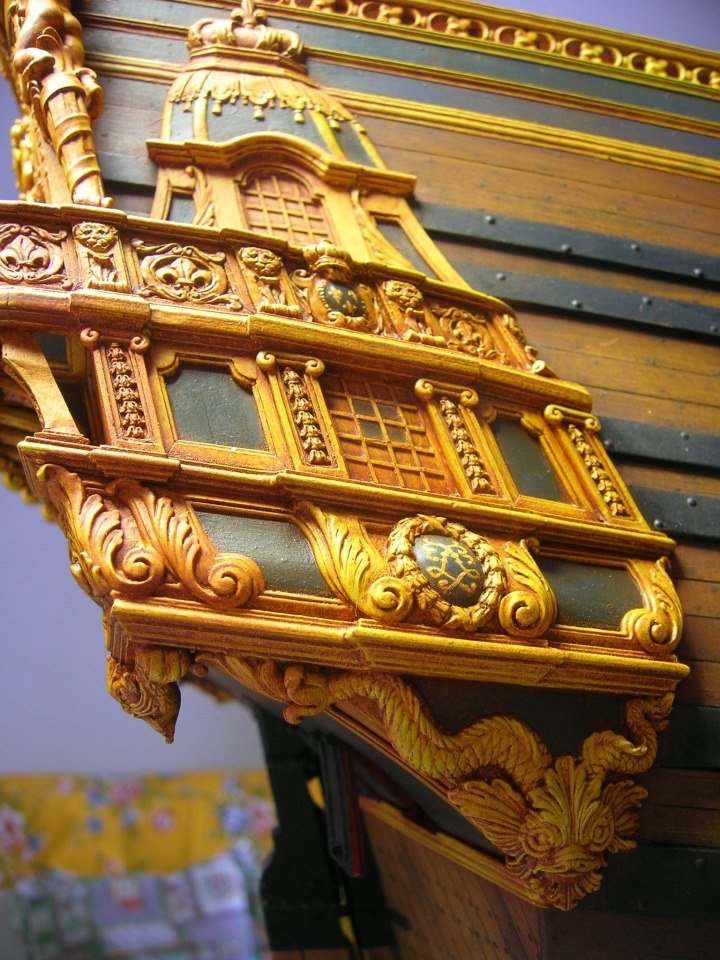
It seems to me that a stylized eagle with it’s outstretched wing, extending into the stern counter, could also carry a clutch of lightning bolts in its clenched talons, below.
- GrandpaPhil, HAIIAPHNK and mtaylor
-
 3
3
-
There would be nothing simple about that at all, really. You have the ornamental sets for L’Ambiteaux to use as a general style-guide, but the monograph for that ship ignores the upper bulwarks completely, and the bow and quarters for your project still need to make specific reference to the underlying allegory. I’ll be happy to follow along, though. If I happen to have any imagery that is helpful, I will be sure to post it, here.
-
-
In the end, I think it is always an effort at interpretation, and perfection is not a reasonable end-goal - in fact, it is impossible. If you manage to capture the spirit of the thing, while imbuing it with some sense of your own spirit, then you have achieved art.
- dvm27, HAIIAPHNK, Mirabell61 and 1 other
-
 4
4
-
I had not noticed, Ian. I will say, though, that it is our quirks that endear us to each other.
- Glen McGuire, Ian_Grant, BANYAN and 1 other
-
 4
4
-
Fabulous progress, Ian. It is nice to hear your voice in the videos.
- Ian_Grant, mtaylor and Glen McGuire
-
 2
2
-
 1
1
-
-
-
-
Eric - she’s really coming along and your deck work is excellent! I would say that aft is a reasonable choice for a few reasons:
While it’s not generally clear to me, here, if these exhaust pipes are just aft of a mast, then a forward-facing exhaust would “cook” the mast rigging.
Also, ships generally sail into the weather, so aft-facing exhaust would minimize water entry in heavy seas/rains.
-
I will look that up T_C. Thanks for the reference!
Hi Jeff. What I do with my styrene, when I need to cut a straight edge, is that I make a series of shallow passes with a matte knife against a steel ruler. It is not necessary to cut all the way through. You can snap along the score line. I then true the snapped edge against a homemade sanding stick with 100 grit paper double stuck to it. Lastly, I always sand both broad surfaces to level the mushrooming that develops from the matte knife and to take away the plasticky appearance of the material; this is the key to a nice paintable surface.
Oh, and another thing - I will “break” any super sharp edges, just as one would if they were making a piece of furniture. Those sharp corners don’t hold paint well, and they tend to look a little severe. A few scraping passes along an edge with a no. 11 blade does the trick.
When it comes to joining two curved surfaces, such as the large figures to the tafferal, I make sure to backlight the joint so that I can see whether I actually have touched down along the joint. Mostly, it’s just a patient process that takes as long as it takes - I’ll spend a couple of hours trying to get one joint where I want it to be.
Another thing I like to do, after those large figures have cured (the initial liquid plastic cement), is that I will come back with liquid, brushable CA - the Crazy Glue brand - and that will wick into and fill any remaining gaps in a joint, while ensuring a super strong bond. Much of the model is constructed in this way and it is way stronger than it really needs to be. This is my compulsiveness at play.
Thank you, guys, for the likes and comments!
- popeye2sea, shipmodel, Bill97 and 4 others
-
 7
7
-
2 hours ago, 72Nova said:
Good question but no, my main focus from the beginning was to add to the museum display by fully masting and rigging her, one thing I do find odd though is every build I've looked at and that? includes the 1/10 model at the museum, is the Helm is not represented?
Michael D.
My understanding is that the helm on Vasa exists behind and below the bulkhead that supports the quarter deck. There is a three slat opening, at main deck level and between the bulkhead doors (if memory serves), that would serve as the communication port to the helmsman.
This is also a feature of the Batavia reconstruction.
-
Perfect sense, thank you!
-
-
-
On 8/4/2023 at 7:17 AM, No Idea said:
Another update from me - The inner waterway which is pretty much more of the same but is easier to make. Its made up of three sections per side.
The parts were then glued into place - I found that the dovetails pretty much hold these parts in their correct place. They do nee to be clamped though to bring them down to the sheer.
Then I made and fitted the first plank up the bulwark so that I could finish the bevel on the waterway. This was then all sanded down and blended in and I'm pleased with the result.
So thats brings another part of the build to conclusion. The next job is to make the binding strakes.
@DaveBaxt this is where I work - Its not a big area but I find it more than adequate. Its always this tidy as its our spare room so I need to make sure that the mess is always cleaned up.
Cheers Mark
I am more than pleased with what's happening, here, and I had nothing to do with it. Awesome transition, there!
- No Idea, Keith Black and mtaylor
-
 2
2
-
 1
1
-
It is all spectacular, Oliver, beyond reason and understanding. Awesome work!
- Oliver1973 and mtaylor
-
 2
2
-
-
That’s a happy dog you have there, Michael. Congrats on the addition to your family!
I hate to ask redundant questions, but of your 17th C. rigging sources, which would you say are the most helpful/insightful toward rigging a model? I have Anderson and Lees; each have their individual merits, although I have not done any exhaustive study of either. Do you have other sources you are using? Your understanding of rigging function and nomenclature is outstanding.
- Ferrus Manus, Nirvana, fmodajr and 1 other
-
 4
4
-
-
Hi Dan,
Superlatives are all spent, at this point, but the project remains of tremendous interest and I really appreciate your sharing of technique for the stropping and seizing of blocks. Your visuals go a long way toward de-mystifying this for me. Thank you!
- mtaylor, Mexspur, mort stoll and 2 others
-
 5
5
-
Thanks Druxey! The top would definitely have been black. Conventionally, speaking, gold or a simulated gold would have been likely for the moulded edge, but I am sticking with the latter 17th C. mandate to reduce gold work. I will match the ocher on the outboard profile, and save gold strictly for ornaments. I have chosen this approach largely for the high-contrast impact that allows the ornaments to really stand-out.
- GrandpaPhil, druxey and mtaylor
-
 3
3



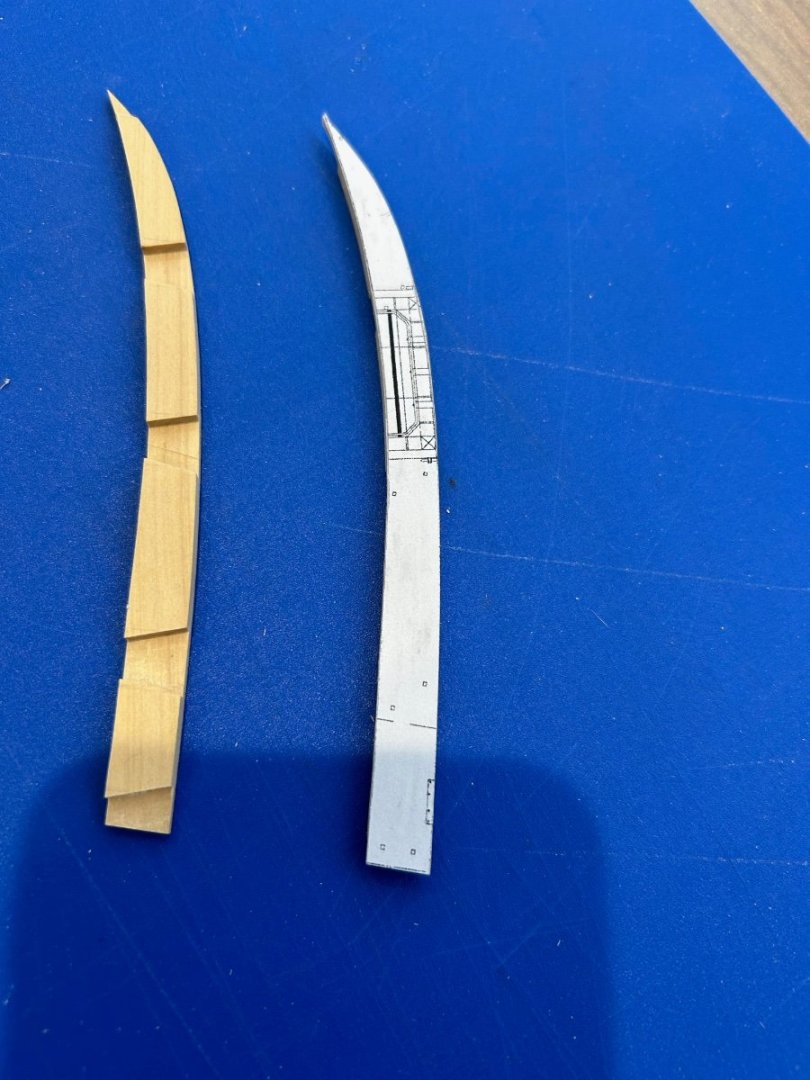
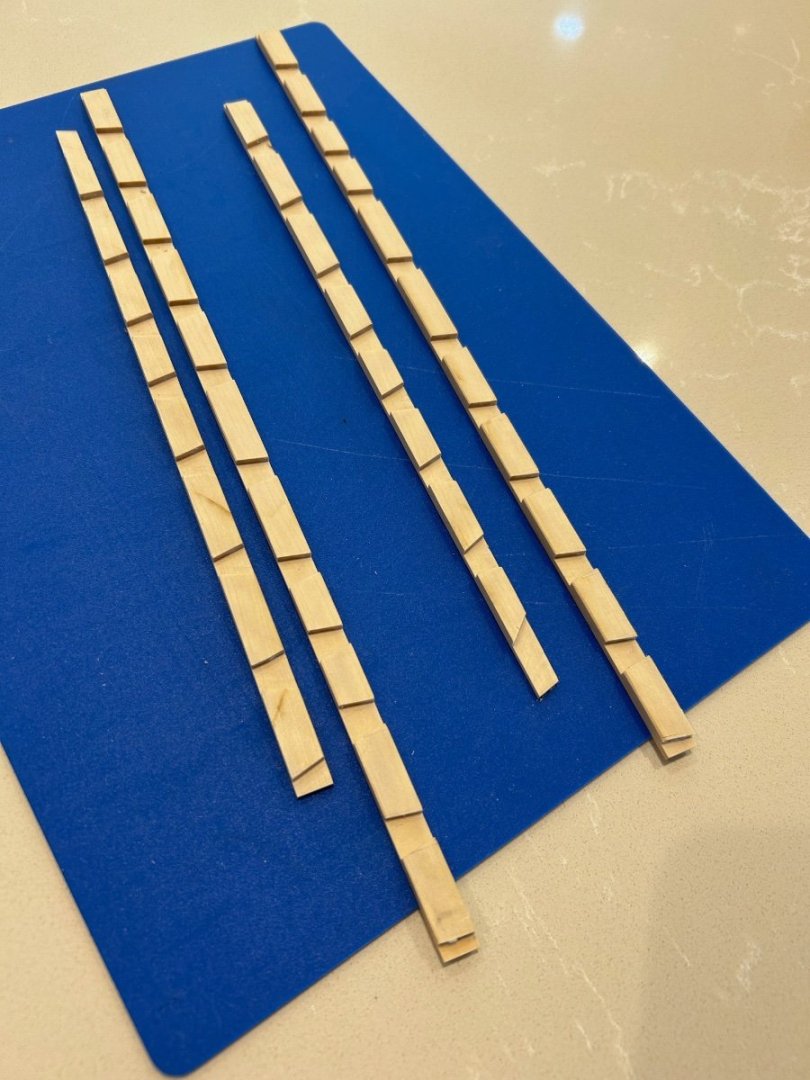
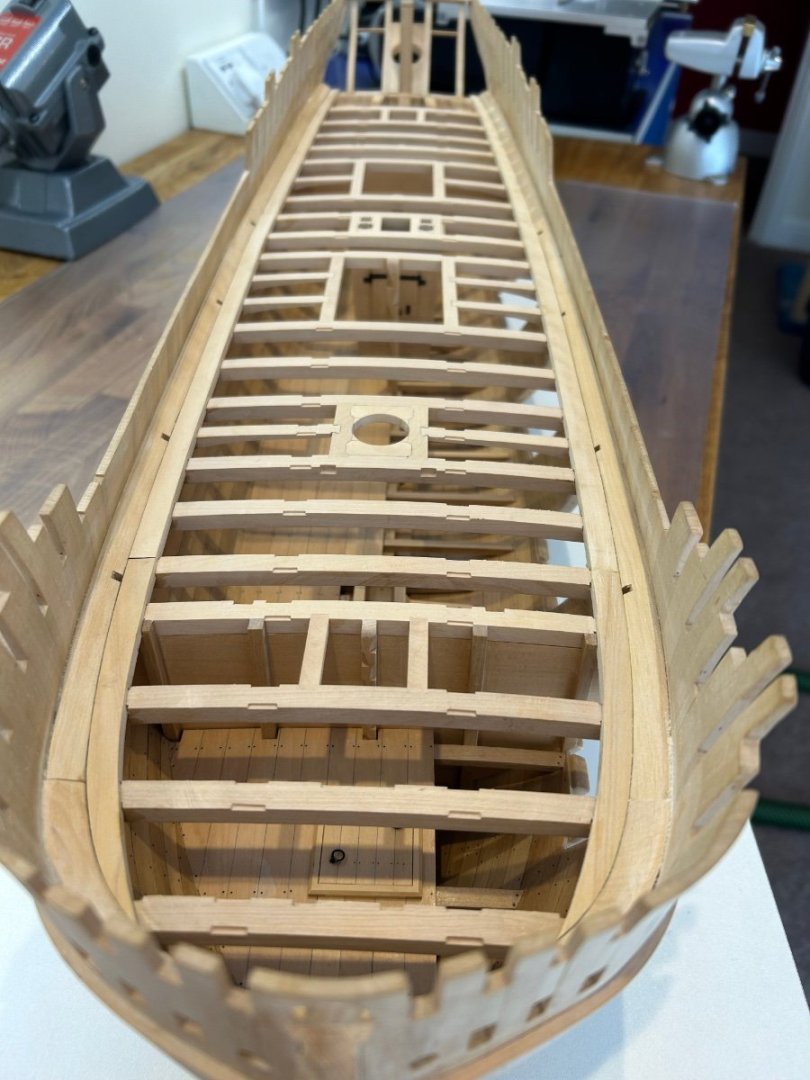
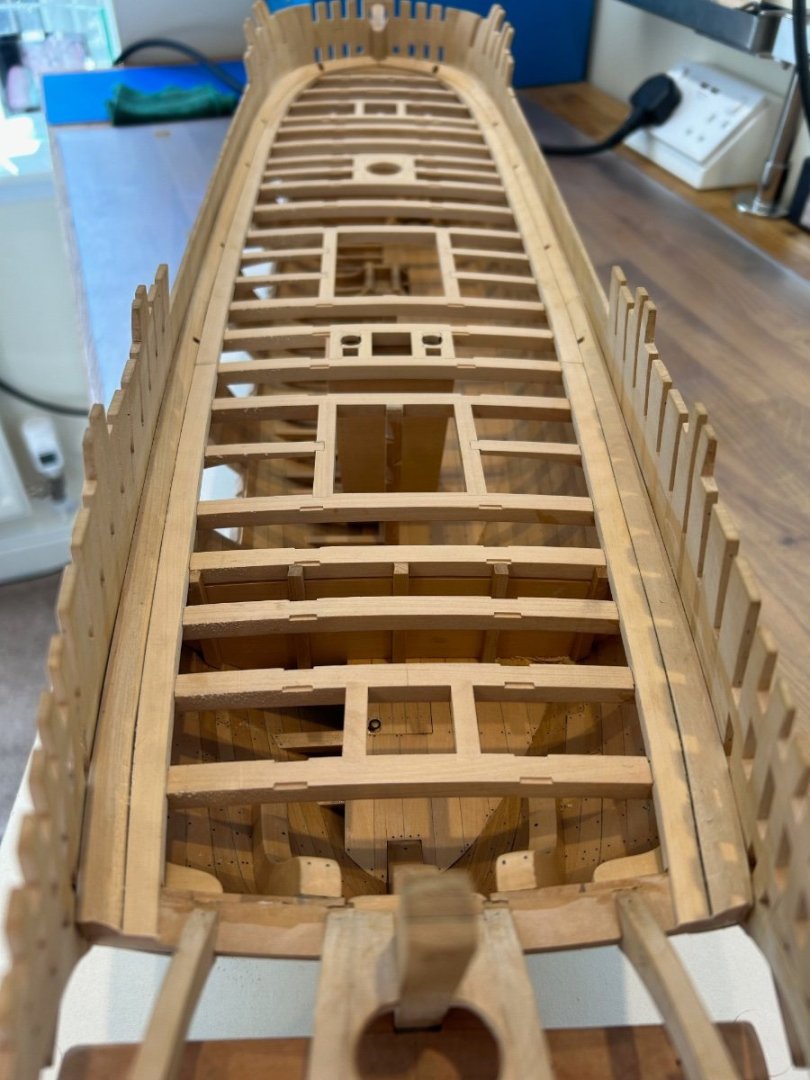
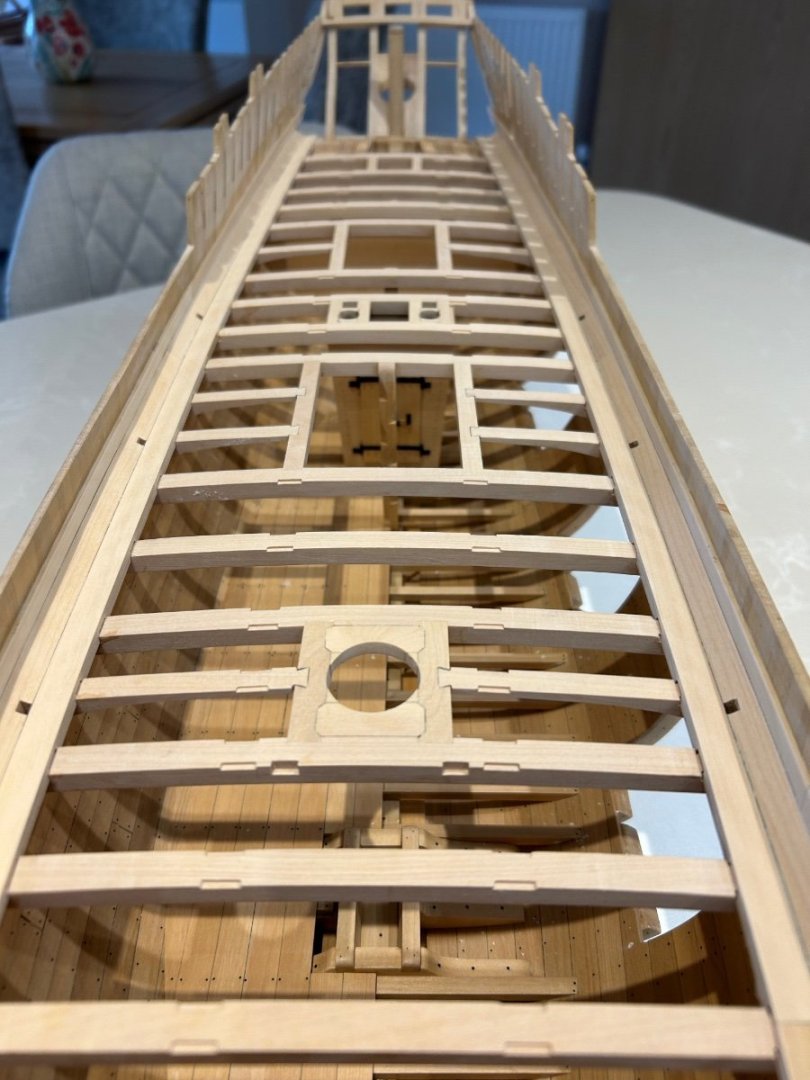
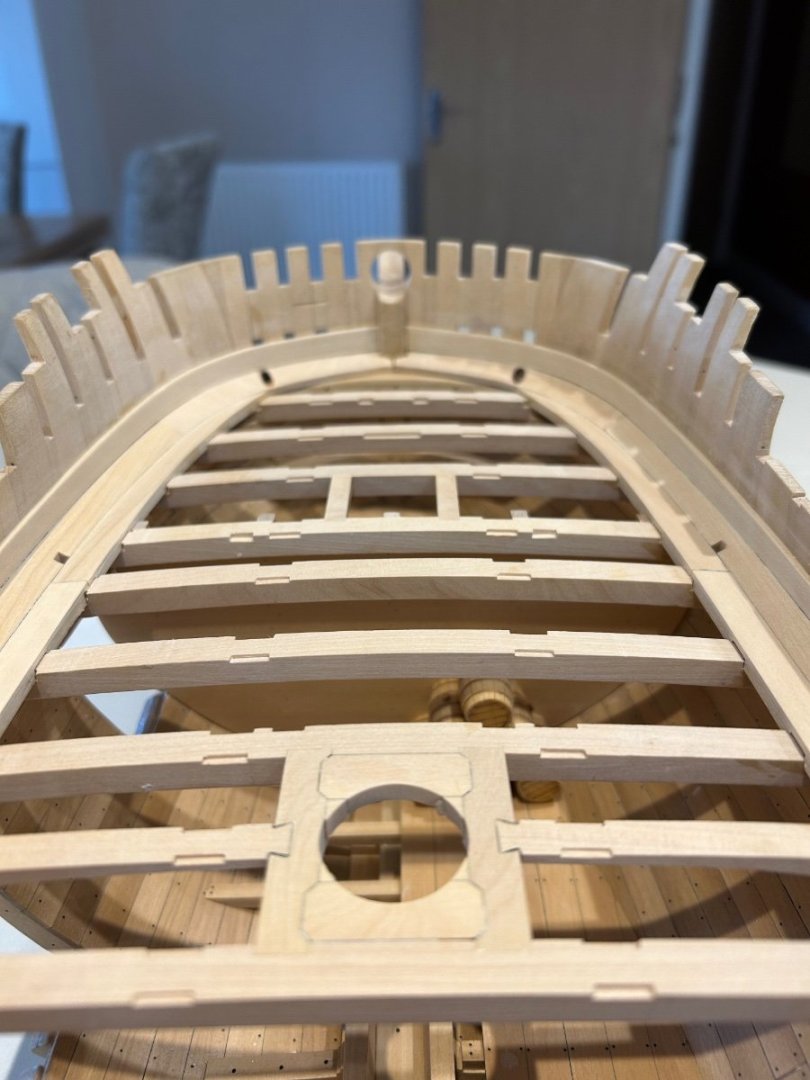
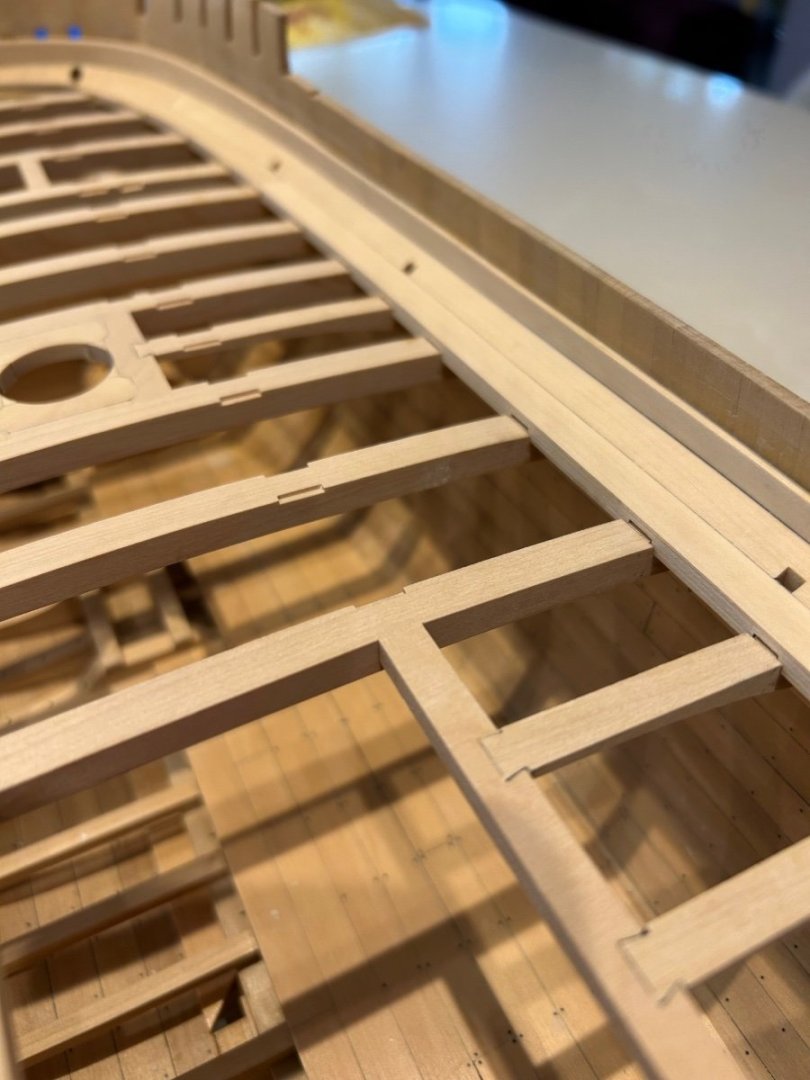
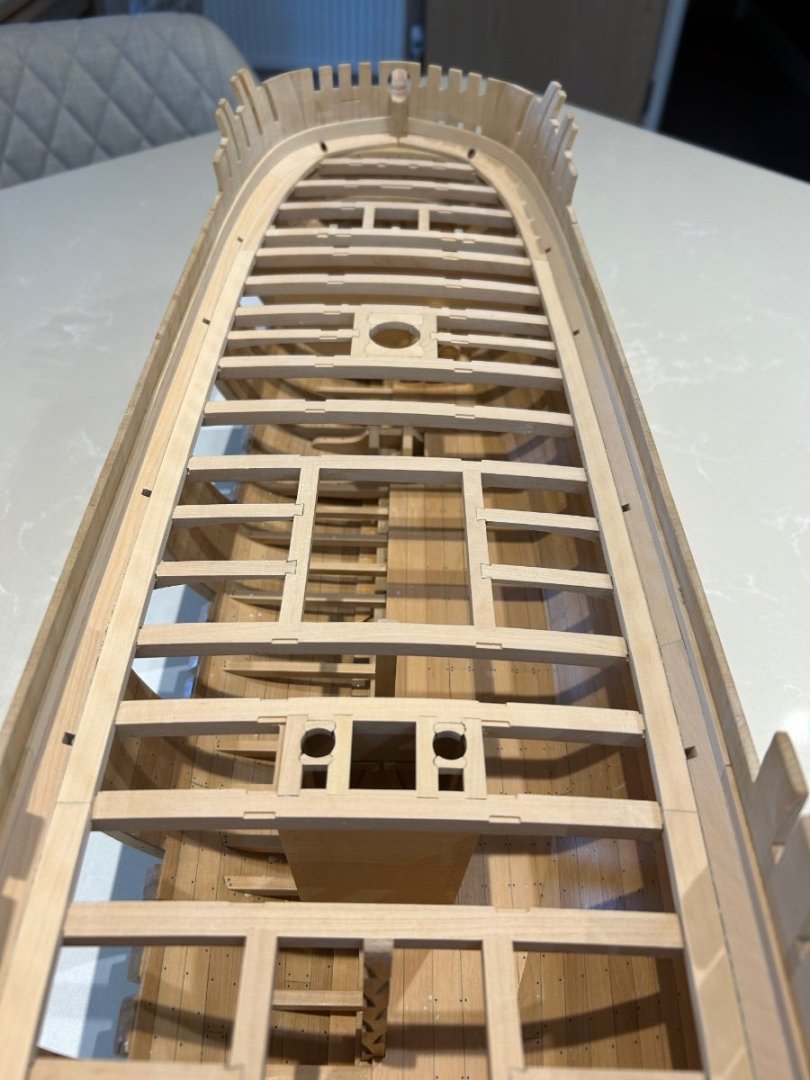
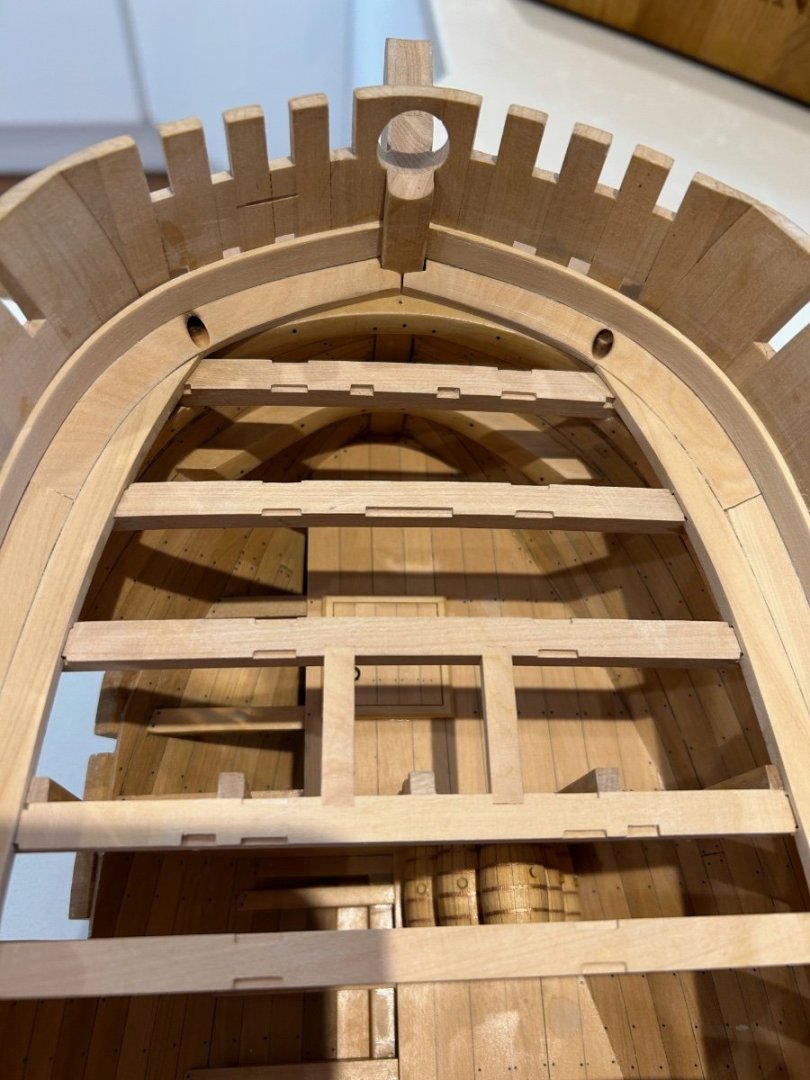
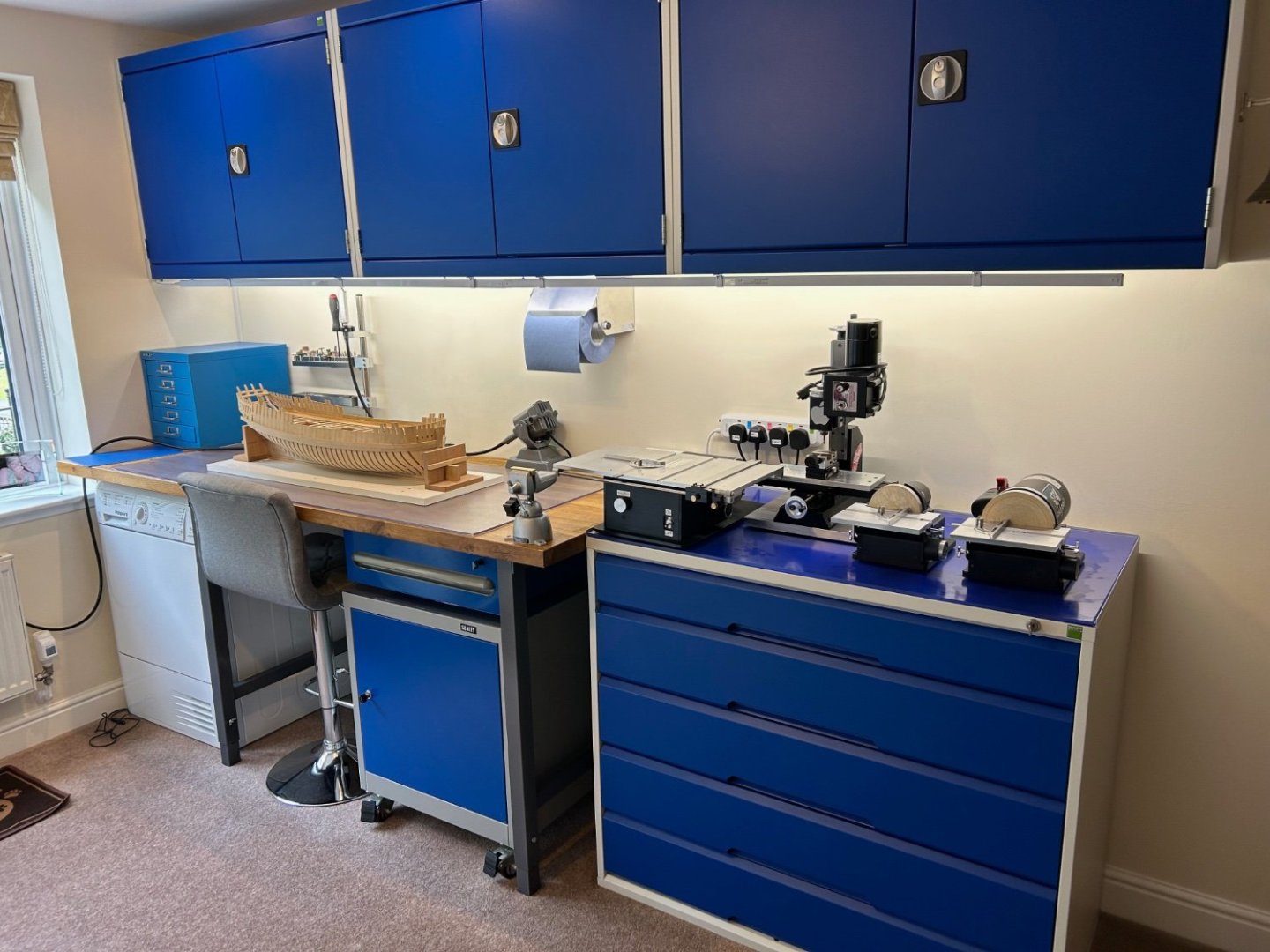
Soleil Royal 1693 by John Ott - Heller - 1:100 - PLASTIC
in - Kit build logs for subjects built from 1501 - 1750
Posted
I’m in!